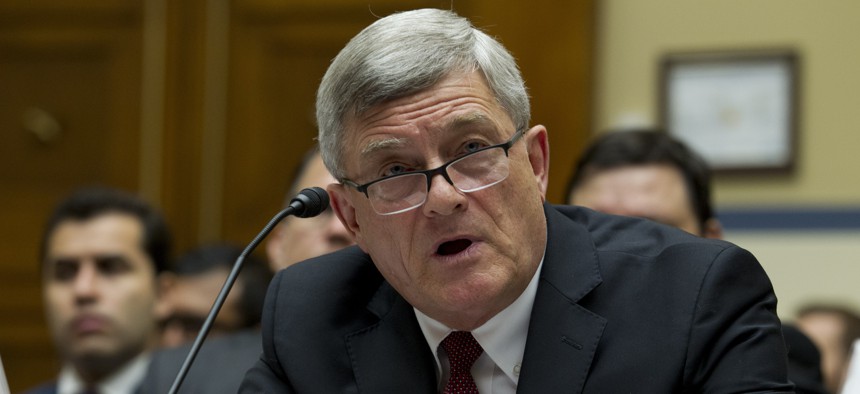Watchdog Warns Census 'Short on Time' While Using Untested New Methods

U.S. Census Bureau director Steven Dillingham testifies before the House Oversight subcommittee on Beyond the Citizenship Question: Repairing the Damage and Preparing to Count 'We the People' in 2020', hearing in Washington, Wednesday, July 24, 2019. Jose Luis Magana/AP Photo
The 2020 Census will for the first time allow respondents to answer surveys online, but the Census Bureau hasn’t been able to test to ensure all new innovative methods will function correctly when deployed, according to the Government Accountability Office.
The Census Bureau plans to deploy new technology to aid in its collection of data on residents in 2020, but a government watchdog agency warned Wednesday that the collection methods have not been tested sufficiently to ensure accuracy or security.
With the U.S. Supreme Court having settled that the 2020 Census will not include a question on citizenship, lawmakers on the House Committee on Oversight and Reform turned their attention toward understanding preparations the Census Bureau has made to collect data in the upcoming census.
The Census Bureau will for the first time allow residents to complete questionnaires online and it will also rely more on aerial photography to verify addresses rather than through door-to-door contact.
“These innovations show promise for controlling costs but they also introduce new risks in part because they have not been tested extensively, if at all, in earlier enumerations,” said Robert Goldenkoff, director of strategic issues at the U.S. Government Accountability Office, at Wednesday’s hearing. “Without sufficient testing across a range of geographic locations, housing types, living arrangements and demographic groups, operational problems can go undiscovered and the opportunities to refine procedures and systems could be lost.”
The bureau also runs the risk of not meeting key information technology milestones by the time the nationwide survey begins in March 2020, said Nicholas Marinos, director of information technology and cybersecurity for the GAO.
“We are running short on time before key census operations begin,” he said. “Moving forward it will be critical for the bureau to devote enough attention and effort to completing IT system development activities and implementing cybersecurity improvements in a timely and prioritized way.”
The GAO furthered detailed its findings in a report released Wednesday, highlighting cybersecurity and IT implementation concerns.
Although the federal government is responsible for the U.S. Census, local and state officials are invested in ensuring it is accurate, as the decennial count is used to figure out how much money will be spent for many programs and to figure out local and congressional election districts. At a meeting in Las Vegas earlier this month, a Census official told county leaders that they could be crucial in encouraging reluctant residents—such as those scared off by the earlier threat of the citizenship question—to participate in the census.
Many local and state governments have been active, coming up with money to spend on census participation and forming “complete count” committees.
Despite the concerns raised by the GAO, Steven Dillingham, the Census Bureau director, said employees and contractors were well prepared for the upcoming survey.
He said census employees are working with industry experts to ensure data is protected and best practices followed. Data collected from respondents is encrypted at every stage of the process, Dillingham said.
“Our well-designed IT systems and integrated operations are working,” he said.
The bureau is about two months behind in hiring partnership specialists who will work in communities to help communication and outreach efforts, having hired only about 800 of the needed 1,500 specialists. Other efforts to hire door-to-door data collection specialists are on track, he said.
Andrea Noble is a staff correspondent for Route Fifty.
NEXT STORY: NCI to enlist chatbots for genetic testing counseling





